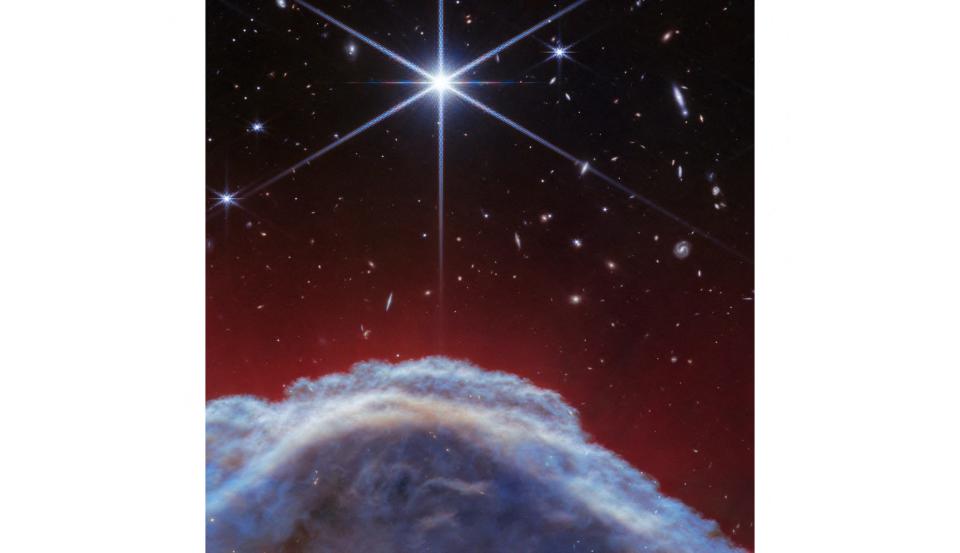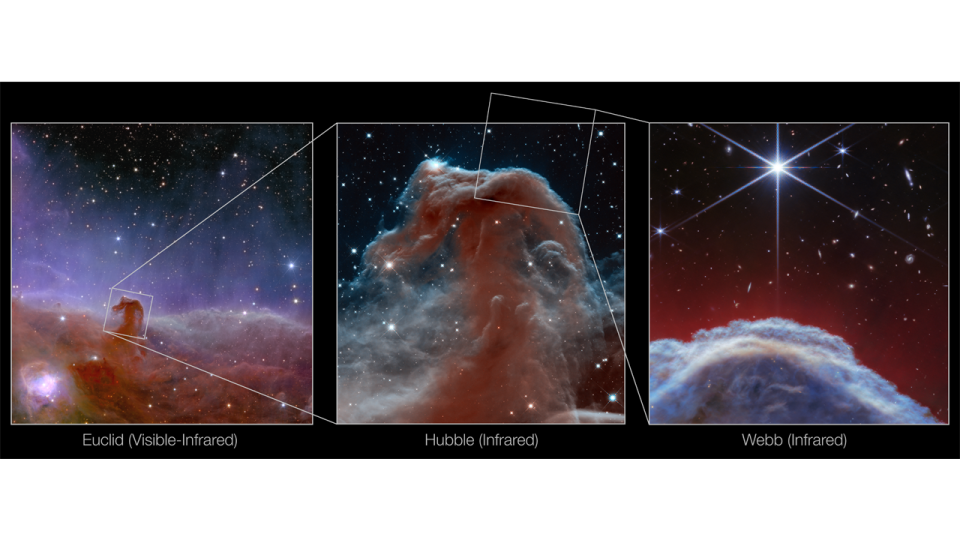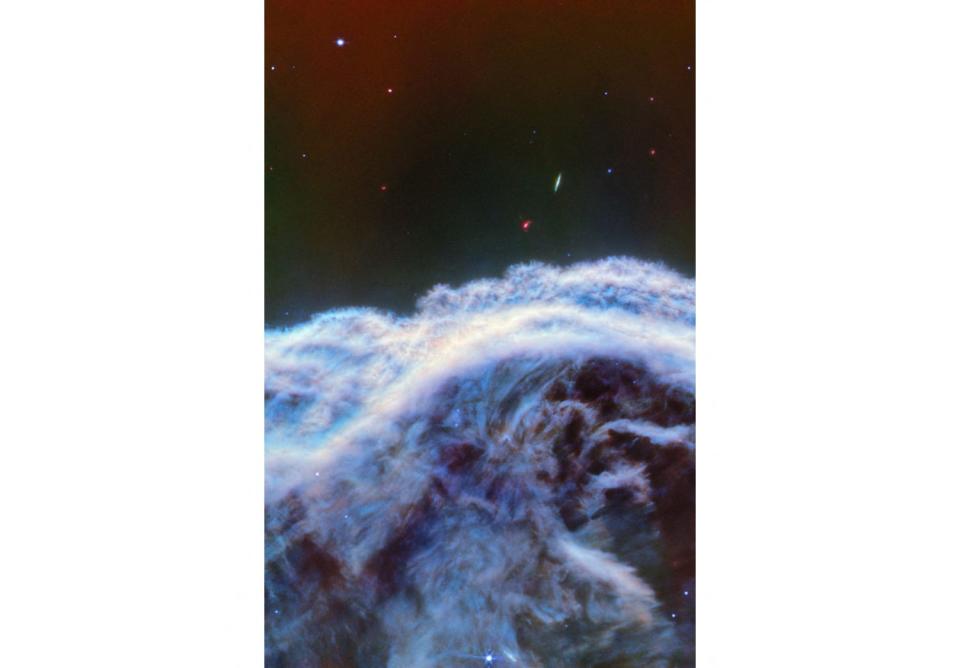Horsehead Nebula's iconic 'mane' is seen in stunning detail in new Webb images: See photos
The Horsehead Nebula, one of the most famous formations of the cosmos, has just been revealed in a stunning new light.
NASA released photos this week that give the equine-shaped feature a literal close-up, showing the top of the “horse’s mane” of the iconic nebula in a level of detail never before seen. The images were captured in mid-and near-infrared by the James Webb Space Telescope, the most powerful instrument of its kind ever put into orbit.
Here's what to know about the Horsehead Nebula, and what NASA says are "the sharpest infrared images to date" of the celestial feature.

'Spiders' on Mars? An orbiter captured images of 'spiders' on Mars in Inca City. But what is it, really?
What is the Horsehead Nebula?
The Horsehead, also known as Barnard 33, is a cold, dark cloud of gas and dust silhouetted against a bright nebula, dubbed IC 434.
Located roughly 1,300 light-years away, the celestial feature resembles a silhouette of a horse's head and neck emerging from what appears to astronomers like whitecaps of interstellar foam. It's part of a vast star-forming region in the constellation Orion.
The Horsehead's unusual shape was first discovered in the late 1800s among the famous pillars of dust and gas known as the Eagle nebula, according to NASA. The cosmic feature, which formed from a collapsing interstellar cloud of material, glows because it is illuminated by a nearby hot star, the radiation of which threatens to erode away the Horsehead.
But while the gas clouds surrounding the Horsehead have already dissipated, the jutting pillar is made of thick clumps of material protecting it from erosion – at least for awhile. Astronomers estimate that the Horsehead has about five million years left before it too disintegrates.
Because it is famed as one of the more difficult objects to see with an amateur telescope, amateur astronomers often use the Horsehead as a test of their observation skills.
ESA last imaged the nebula in 2023

Rising like a giant cosmic horse, the Horsehead nebula has become one of the most photographed objects in the sky.
Last year, the European Space Agency's new Euclid space telescope included the Horsehead Nebula among a collection of its debut cosmic images. The agency's panoramic view of the nebula was captured in about an hour and – at the time, at least – displayed an unprecedented sharpness and scale.
NASA's Hubble Space Telescope also imaged the nebula in 2013 in near-infrared light, making it appear transparent and ethereal. The image, which was historic for revealing the delicate structure normally obscured by dust, was featured as the telescope’s 23rd anniversary image in 2013.
How NASA's Webb telescope got the latest images
The latest images, which used Webb's Near-infrared Camera (NIRCam) and Mid-Infrared Instrument (MIRI,) reveal for the first time the illuminated edge of the Horsehead.

The first image, captured with the NIRCam, focuses on a portion of the horse’s “mane” that is about 0.8 light-years in width.
The clouds that appear blue at the bottom of the image are packed with hydrogen, methane water ice and other materials, NASA said. Atomic and molecular hydrogen, represented as reddish wisps, can be seen extending above the main nebula, while distant galaxies are scattered in the background.
The second image, taken with MIRI, show the glow of dusty silicates and soot-like molecules called polycyclic aromatic hydrocarbons.
Webb's images are laden with data that will help astronomers better understand the shape of the nebula and the ways in which ultraviolet light is slowly evaporating the dust cloud, sweeping dust particulars away.
The observations were published in the journal Astronomy & Astrophysics.
Astronomers intend to study the data obtained from the Webb images to learn more about the evolution of the physical and chemical properties of the material observed across the nebula.
Eric Lagatta covers breaking and trending news for USA TODAY. Reach him at elagatta@gannett.com
This article originally appeared on USA TODAY: Horsehead Nebula revealed in stunning detail in new NASA photos

